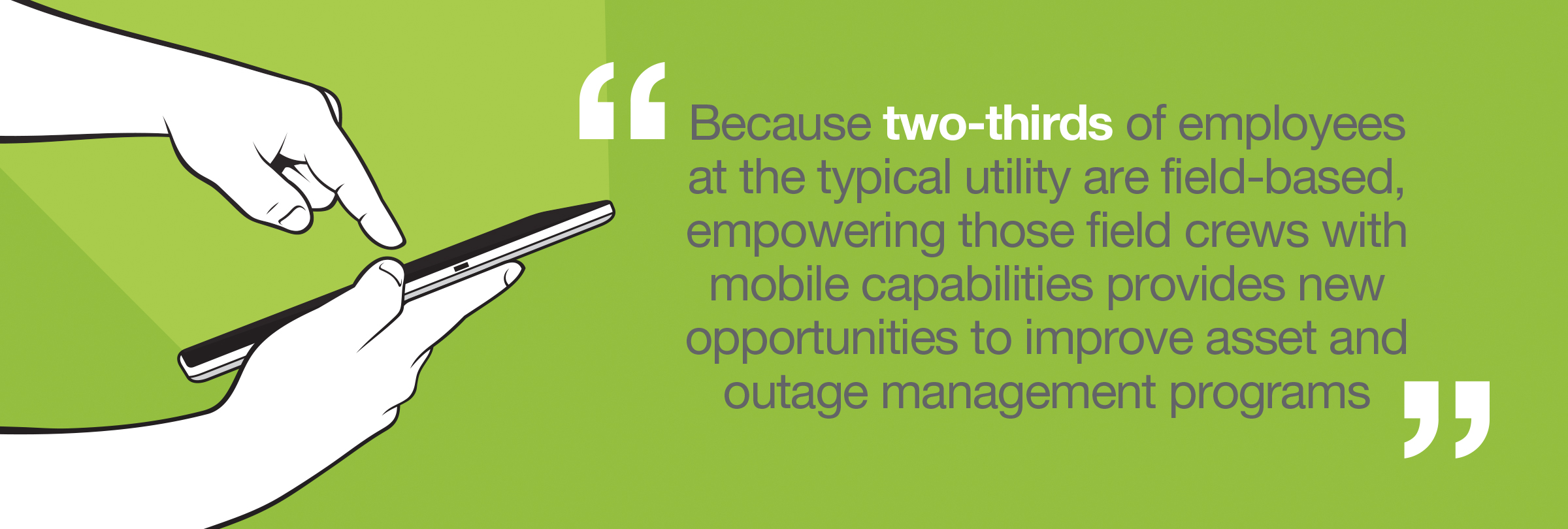As utility workers continue to find new ways to share relevant, real-time data from the smart grid in the field, early adopters of field mobility solutions are already seeing significant productivity gains, as much as 20 to 30 percent, according a recent report from PwC.
A recent NetMotion Wireless survey of 100 top U.S. utilities found that 70 percent of respondents believe field workers became more productive and could complete more work orders per day due to the implementation of mobile computing to leverage real-time information.
As new digital capabilities continue to improve efficiencies in every aspect of utility operations, field service personnel, in particular, are embracing mobile applications to replace paper processes for managing asset information in the field.
When mobile technologies are integrated with utility back-end systems, crews have access to interactive, real-time maps and information about assets. They can update and complete work orders on mobile devices. At the same time, dispatchers are able to track and monitor crew locations and activities. These capabilities provide utilities with a range of operational benefits:
- Greater efficiency and productivity — Using today’s mobile applications, work orders can be transmitted digitally to crews providing immediate, at-their-fingertips access to the information needed for their assigned tasks, which is displayed on a map, making it easier for them to plan their routes.
- Improved communications — Many of today’s mobile applications provide advanced communication features that enable crews to seamlessly connect and share data with the home office.
- Accelerated responsiveness — With speedy transmission and access to situational information, utilities are better able to prioritize field tasks and resources in order to respond quickly to urgent needs.
Two-thirds of employees at the typical utility are field-based. Empowering utility field crews with mobile capabilities provides new opportunities to improve asset and outage management programs.

Putting Smart Grid Data to Work in the Field
As utilities scramble to find solutions to leverage the vast amount of sensor and other data now available for meeting asset management, regulatory and daily field operation challenges, many are making the move to mobile field operations.
Utilities like SEMO Electric Cooperative in southeast Missouri have equipped their field crews with iPads and iPhones to enable “fingertip access to a tremendous amount of information,” says Sean Vanslyke, SEMO’s CEO. Use of familiar consumer-grade devices like these also makes training and implementation fast and cost-effective.
Wisconsin Public Service (WPS), a utility serving more than 400,000 customers in northeastern Wisconsin, has improved outage response and restoration times with the implementation of an outage management system used to arm field crews with GIS-based maps that provide the same data available to dispatchers in the home office.
Utilities across the country are realizing the value of data in reference to system events that are transmitted from meter endpoints — including meter or device status, power quality, tamper flags and hardware alerts. Meter and sensor alerts not only improve outage restoration activities, they can be used to prioritize general maintenance activities and generate proactive work orders as well.

Integration of this data with mapping and field management tools provides dispatchers with a view of the crew’s location in relation to trouble spots in real-time.
Analytics can help optimize efforts even further by enabling greater visibility into asset performance and health to prioritize maintenance decisions.
The combination of advanced grid analytics, distribution sensors and outage management applications — offered as part of Landis+Gyr’s Gridstream® Distribution Intelligence portfolio — help address resource and IT infrastructure challenges.